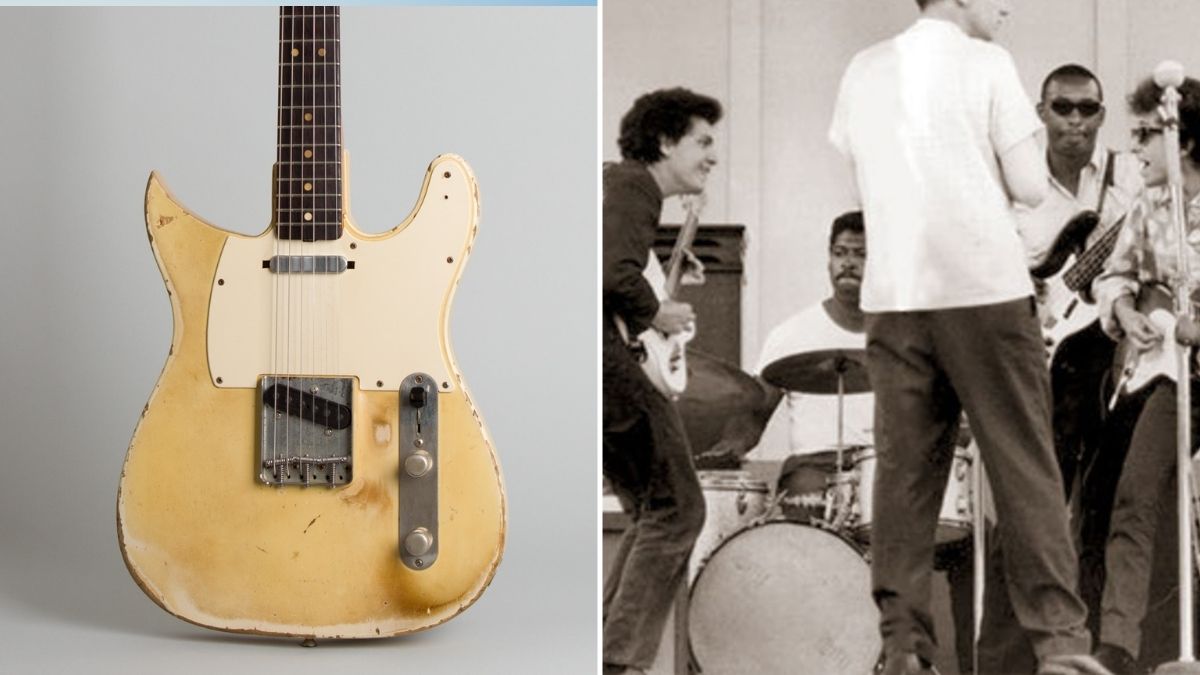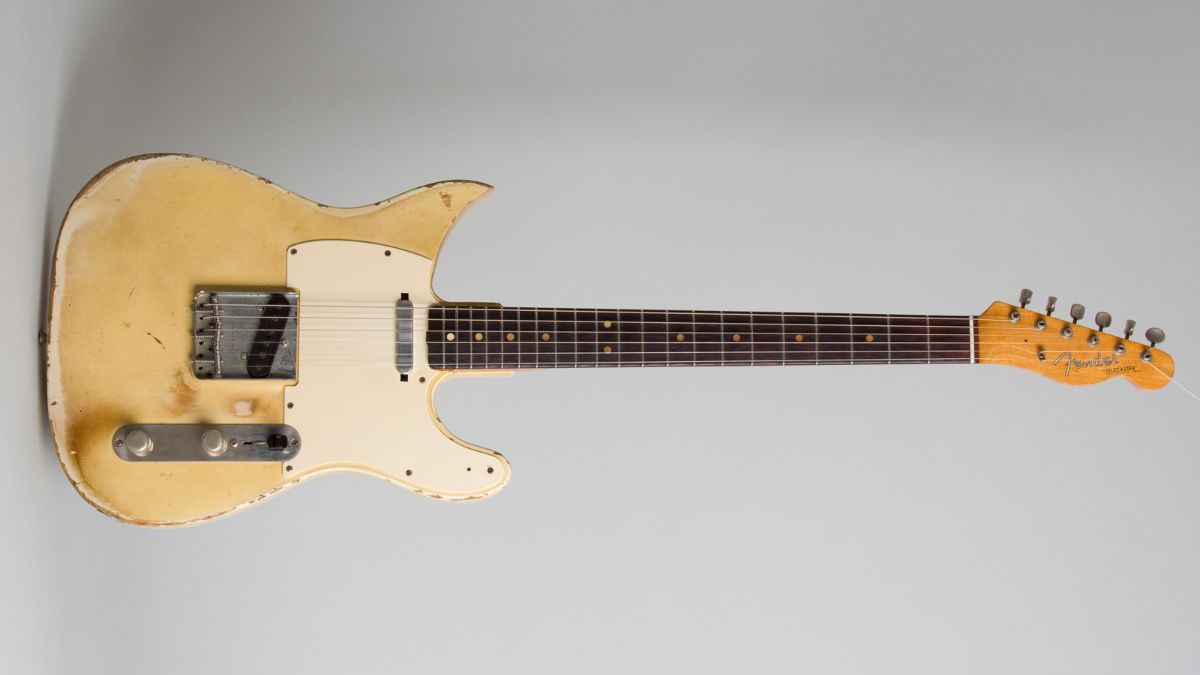
Less than a week after Mike Bloomfield's extravagantly painted 1966 Fender Telecaster made its way to the second-hand market, the Tele he played during Bob Dylan's infamous Newport Folk Festival set in 1965 has now come up for sale.
However, some rather choice and stomach-turning mods have been made to the heavily butchered electric guitar.
Listed on the Retro Fret website for $275,000, the instrument was present for a change-making moment in rock ‘n’ roll history, as, with Bloomfield by his side, Bob Dylan ditched his acoustic guitar to go full electric for the first time during the Newport Folk Festival.
As the gear seller says, “Dylan’s take-no-prisoners plugged-in performance with Michael Bloomfield loudly ripping away at his side on this Telecaster was a seminal moment in pop culture.”
Vintage Guitar Magazine’s October 2015 cover story called it “the guitar that killed folk”, but that set isn’t the only story it has to tell.
As for the instrument’s build date, its neck is stamped August ’63 while the body is hand-dated to October. Bloomfield called it his first “good” electric, and he first recorded with it on a 1965 demo session with Columbia producer John Hammond Sr.
Soon after, Bloomfield was brought into Dylan’s camp and used the guitar during the recording of Highway 61 Revisited. This particular Tele can reportedly be heard on Like A Rolling Stone and Tombstone Blues.
Bloomfield also favored this Telecaster when he helped record the self-titled debut album by The Paul Butterfield Band.
As the story goes, the electric guitar was still in one piece when Bloomfield decided to swap it in late 1965 for a ’54 Gibson Les Paul. John Nuese, its left-handed new owner, then made the crude cutaway to make it easier to play. He was the guitarist for Gram Parsons during the singer’s early career.


At the same time as the cutaway was made the entire electronics were updated, but its last owner – who bought the Tele at a 2015 auction – has changed the pickups to hand-wound 1963-style Seymour Duncan Custom Shop single-coils, with modern reproduction 250k pots and wiring to help restore the guitar’s original character.
The strap button on the tail end is original, but several old holes on the treble side show a history of moving button locations. Retro Fret promises a “superb playing instrument”, despite its scars and modifications.
Head to Retro Fret to learn more.







